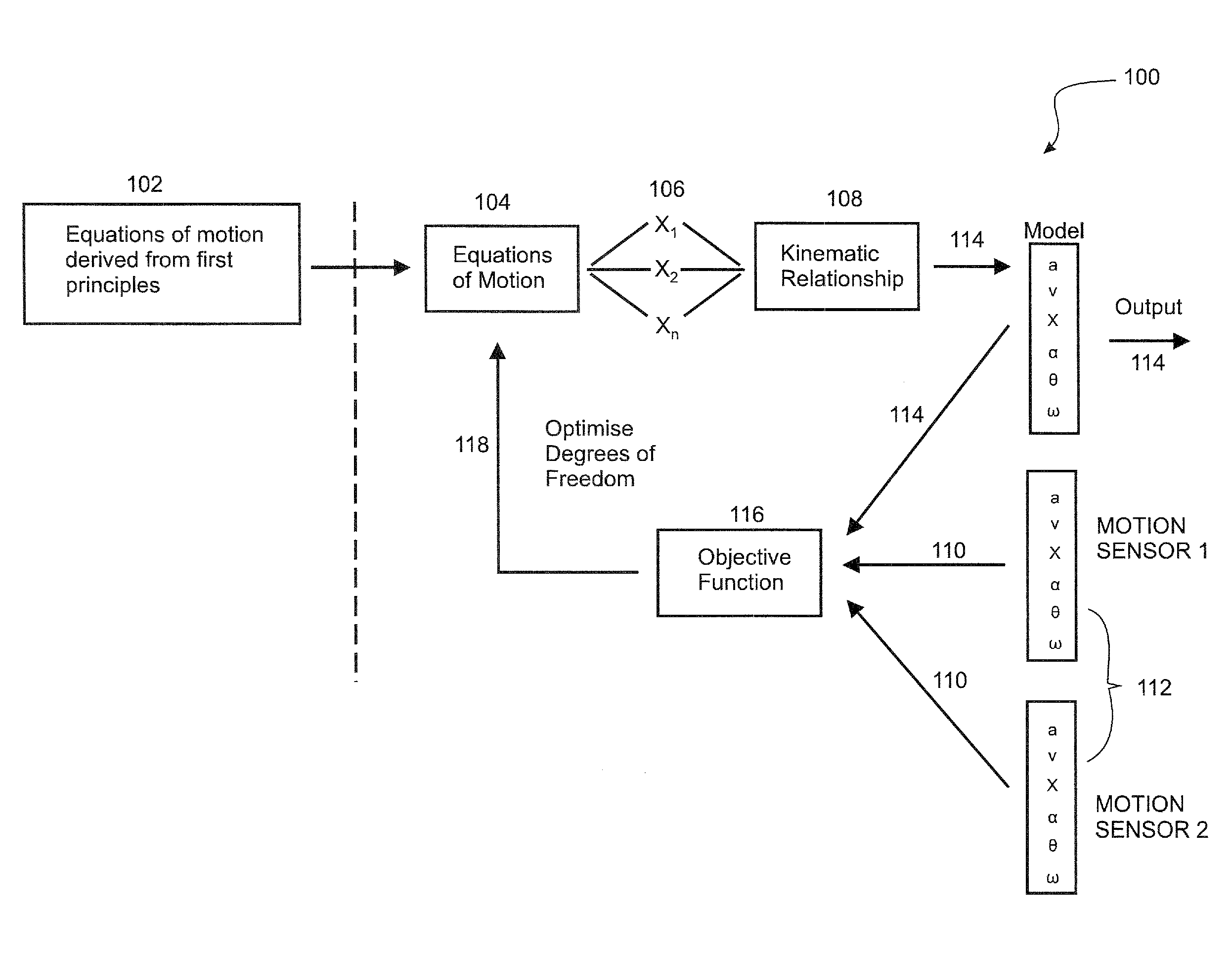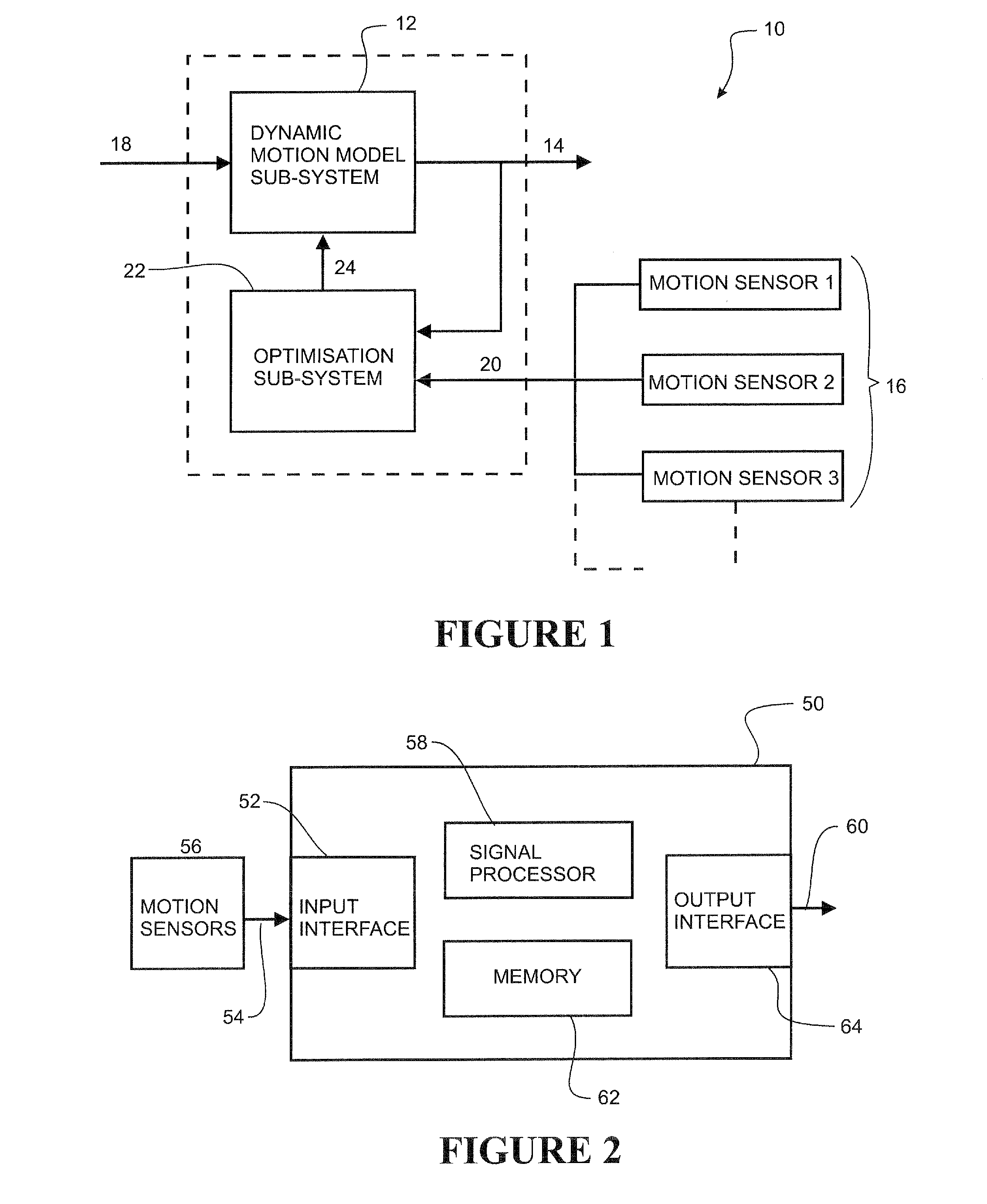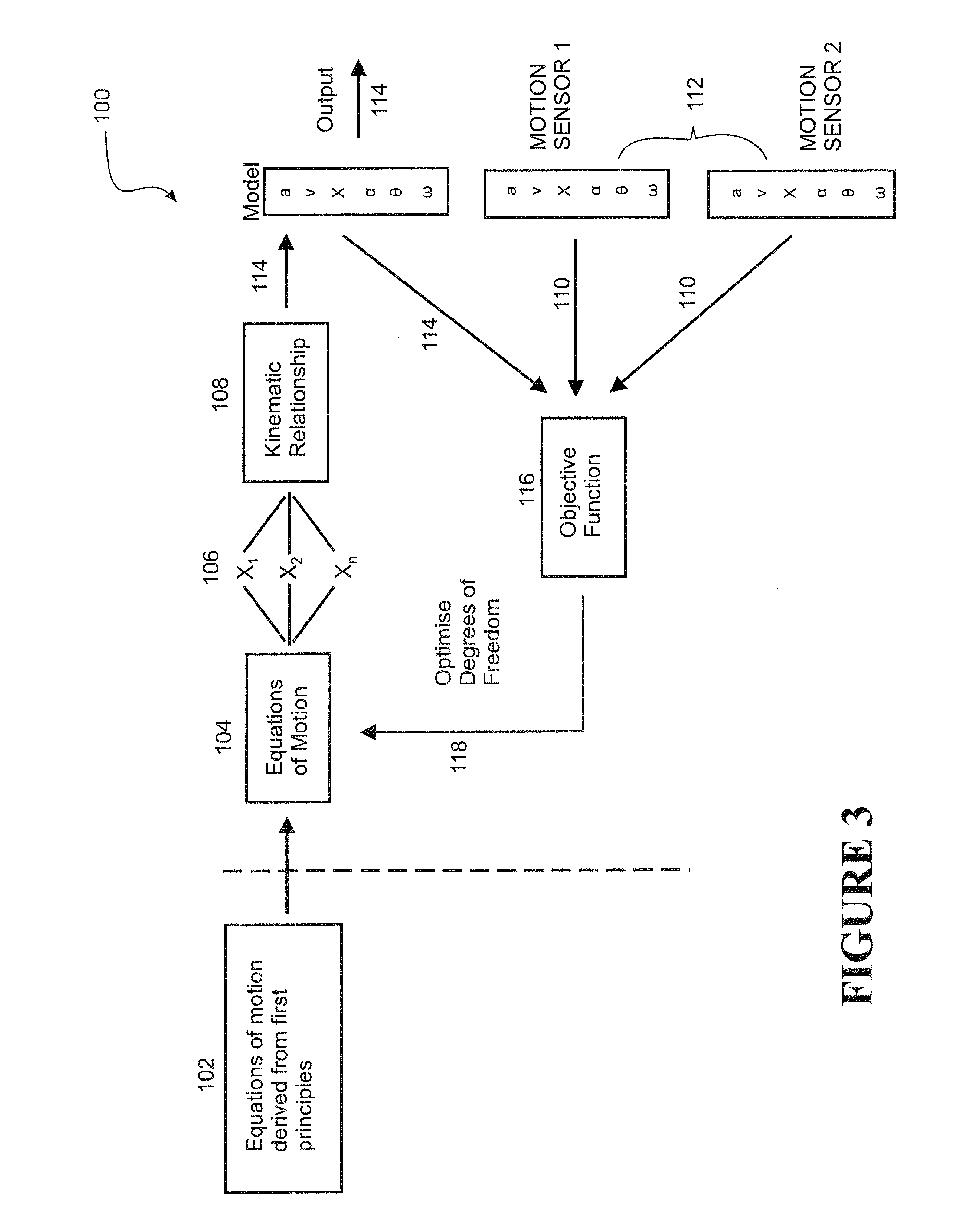System and Method for Determining Motion
- Summary
- Abstract
- Description
- Claims
- Application Information
AI Technical Summary
Benefits of technology
Problems solved by technology
Method used
Image
Examples
experimental example
Swinging Pendulum
[0114]With reference to FIGS. 4a-7b, an experiment showing the implementation of the motion sensing system and method for a physical system comprising an instrumented two-dimensional pendulum will be described. The example is not intended to be limiting.
[0115]Referring to FIG. 4a, a simple pendulum was constructed consisting of a lightweight aluminum rod 200 mounted to a rotary encoder 202 (pendulum joint) and a brass mass 204 fastened to the bottom of the rod. A single motion sensor was placed at a selected position on the pendulum arm (measured distance of 0.534 m from the pivot) and aligned with the axis of the arm. The rotary encoder 202 had a 0.25° (0.00436 rad) resolution, and a sampling frequency of 100 Hz. FIG. 4b shows a schematic diagram illustrating the angle and acceleration components measured in the experiment, in particular tangential acceleration at, normal acceleration an, and angular position θ.
[0116]In this experiment, the motion sensor was an ind...
experiment observations
[0125]Validation is an important issue when using models to approximate parameter values in real world systems. The validation process requires the outputs of the system to be compared to physically measureable metrics. The results shown in this experiment validate both the model developed and the technology used.
[0126]The optimized output for lsens of 0.531 m was close to the physically measured length of 0.534 m. This shows us that the model was able to predict the position of the motion sensor within 1% of the physical measurement.
[0127]The accuracy of the model with respect to the sensor technology is shown in the comparison of the magnitude of the RMS errors between each of the parameters in the objective function. The fitted models all produce modest RMS errors. Further validation of the system comes from comparing both the raw sensor data and the optimized model to the ‘gold standard’ encoder. As shown an improvement in accuracy is gained from using the model in conjunction w...
PUM
 Login to View More
Login to View More Abstract
Description
Claims
Application Information
 Login to View More
Login to View More - R&D
- Intellectual Property
- Life Sciences
- Materials
- Tech Scout
- Unparalleled Data Quality
- Higher Quality Content
- 60% Fewer Hallucinations
Browse by: Latest US Patents, China's latest patents, Technical Efficacy Thesaurus, Application Domain, Technology Topic, Popular Technical Reports.
© 2025 PatSnap. All rights reserved.Legal|Privacy policy|Modern Slavery Act Transparency Statement|Sitemap|About US| Contact US: help@patsnap.com



